A slow tire leak is more than just a nuisance. A leak can lead to low tire pressure. Not to mention, prolonged running on an underinflated tire can lead to more extensive tire damage or even cause a dangerous blowout.
If you’re experiencing a slow leak, here are some things to look for:A tire puncture: It is a common misconception that a puncture will cause the tire to immediately go flat. However, in many cases the object that caused the puncture remains lodged in the tire and prevents the air from leaking out quickly. As with all tire leaks, it is important not to ignore a puncture. Eventually to object will either wear down and/or work its way out of the tire. For more on this read our article How to Repair a Tire with a Safe, Permanent Fix.
Wheel damage: Another common cause for slow tire leaks is damage to the area where the tire bead meets the rim. This type of damage is typically cause by the driver hitting the curb, taking a speed bump at high speeds OR those dreaded potholes! The impact deforms the wheel’s metal surface which may cause the tire to pull away from the mounting surface of the wheel.
Valve stem damage: The third most common cause for slow tire leaks is worn out or damaged valve stems. Time, use and exposure to elements can cause your valve stems to wear out and cause leaks.
Diagnosing your tire leak:
If your vehicle is equipped with TPMS, you will know right away if you have a leak. If the sensor light on your dashboard goes off, you inflate all the tires back to proper pressure and the light goes back on a few days later – you likely have a leak. If your vehicle does not have TPMS, its important to check your tire pressure regularly.
Once you’ve identified that you have a leak, use TECH Chek to locate the source of your leak. Simply spray the product all around the tire.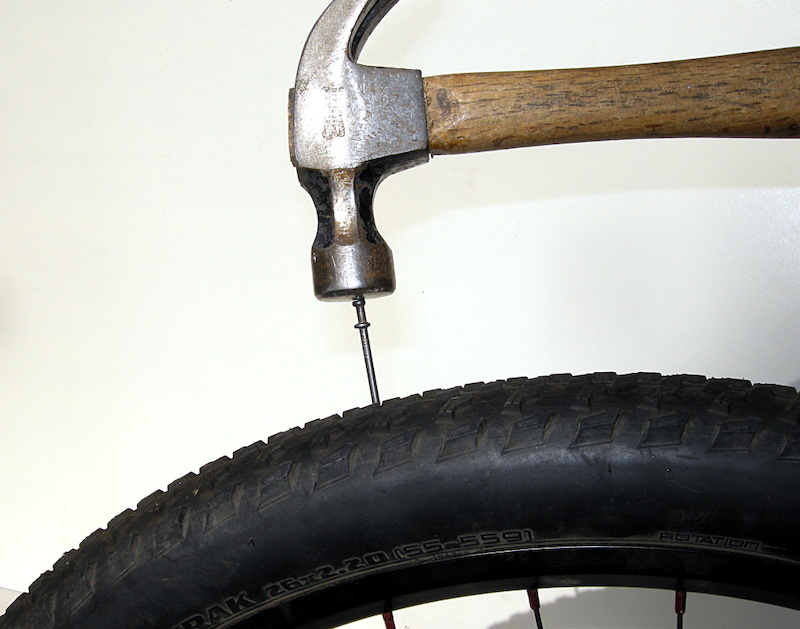 Where the surface of the tire begins to bubble is likely the source of your leak.
Where the surface of the tire begins to bubble is likely the source of your leak.
It’s important to have your tire diagnosed by a professionally trained tire shop or mobile tire repair service as soon as possible. In the case of a puncture, you may want to use a tire repair kit to keep your tire properly inflated until you can have it serviced. The leak should then be permanently fixed using a proper tire repair consisting of a cured rubber stem and repair unit.
If the leak is caused by a damaged valve, a trained tire technician can typically replace the valve at a minimal cost. In some cases, however, the tire may need replaced.
If the leak is caused by a damaged wheel, a tire technician may be able to reseat and seal the tire using a bead sealer. However, if the damage to the wheel is significant, unfortunately that means you may need to replace the wheel itself.
To read more about the types of damage that can and cannot be repaired, click here!
Your tires are where the rubber meets the road – literally – when it comes to the safety and performance of your car. That means, if your tire is leaky, you could be putting your safety at risk.
That means, if your tire is leaky, you could be putting your safety at risk.
A leaky tire causes low tire pressure, which can decrease fuel economy, and put you at risk for a blowout. It also decreases the ability of your car to handle properly, making it more difficult to respond to emergency situations or drive in inclement weather.
In this article, we’ll discuss how you can diagnose and fix slow tire leaks. Don’t just ignore that low pressure sensor – check out this guide!
The Most Common Causes Of Slow Tire LeaksThere are three common issues that cause slow tire leaks. Let’s discuss each one of them now.
If your valve stem is damaged, there will be a slow and constant leak. This leak could come from either the body of the valve, or the base of the valve, where it meets the tire.
This leak could come from either the body of the valve, or the base of the valve, where it meets the tire.
Contrary to popular belief, puncture damage usually doesn’t lead to an immediate flat tire or blowout, in most cases. This is because the object usually remains lodged in the rubber, preventing air from leaking quickly.
There are a few ways you can diagnose a slow tire leak
 If one of your tires seems perpetually under inflated, chances are you have a leak.
If one of your tires seems perpetually under inflated, chances are you have a leak.If you have a slow tire leak, you’ll want to have it repaired professionally as soon as possible. In some cases, you may want to keep a tire plug or patch kit in your vehicle. These kits are easy to use, and can keep your tire inflated until you bring it to a professional tire repair shop.
To permanently fix a tire leak caused by a puncture, you will need a “plug and patch”. This method of repair involves removing the tire from the wheel, and placing a combination plug and patch on the tire.
If your leak is caused by a faulty valve, you may need to replace it or your tire. Leaks caused by a damaged mounting surface may require you to replace the entire wheel.
Leaks caused by a damaged mounting surface may require you to replace the entire wheel.
If you need to repair a tire damaged by a puncture, or you think your valve or mounting surface may be damaged, we can help!
Schedule your appointment on Ride Time today, and come to our service centre now in Winnipeg, to make sure you stay safe on the roads!
There are several different ways to fix a leaking tire. One way is to use a patch kit. The patch kit includes glue, sealant, and wire mesh. You can use glue to attach the wire mesh to the tire. to make sure the wire mesh stays in place. Another way is to use a tube. The tube is a puncture repair tool. You can use it to fix a leaky tire by inserting it into the tire and inflating it. You can then remove the tube when you're done fixing the tire. Finally, you can replace the entire tire if it is damaged or worn.
There are many reasons why tires can leak. The most common cause is a hole in a tire caused by a crack, puncture, or other damage. Other causes include over-inflating, incorrect inflation pressure, and improper wheel alignment. collapse and form a hole. Finally, there is always the possibility of a blowout when air escapes from under the tire, which can lead to a leak.
The most common cause is a hole in a tire caused by a crack, puncture, or other damage. Other causes include over-inflating, incorrect inflation pressure, and improper wheel alignment. collapse and form a hole. Finally, there is always the possibility of a blowout when air escapes from under the tire, which can lead to a leak.
If you notice that your tire is leaking air or fluid, there are a few things you can do to try and fix the problem:

There are a few things you can do to keep your tire from leaking. The most important thing is to make sure the tire is properly inflated. Overinflating a tire can cause it to rupture, resulting in air leakage. Another common problem is using the wrong type of stem valve or sealant on your tires. If these problems are not corrected, air will eventually come out of the tire and it will leak. Here are some tips for fixing a leaking tire:
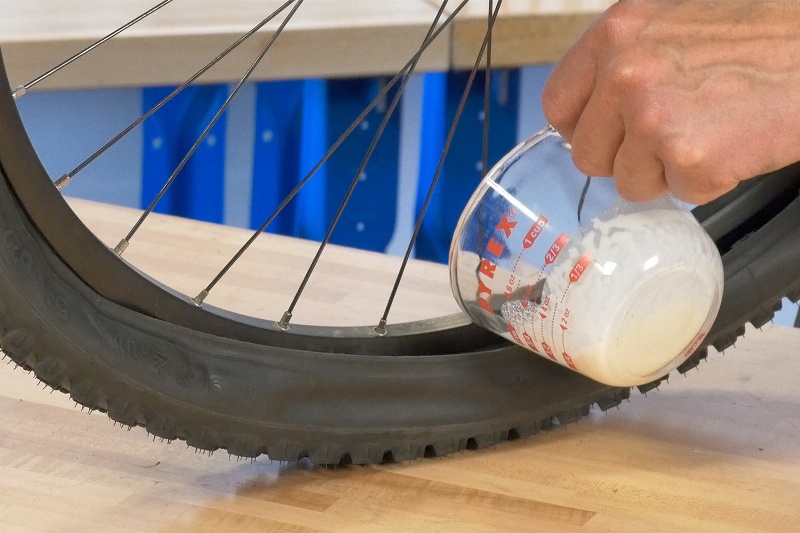 Damaged valves or stems can allow air to escape from your tires, causing leaks.
Damaged valves or stems can allow air to escape from your tires, causing leaks. A leaking tire can lead to a number of problems, including poor fuel economy, increased wheel and suspension wear, and even a possible explosion. Here are some tips on how to fix a leaking tire: 1. Check your tire pressure regularly. Low or low tire pressure may indicate a leak somewhere in the system. If you notice unusual tire noise or vibration while driving, it may be time to check the pressure. Replace worn or damaged parts as soon as possible. A broken seal around a valve stem or tube could cause air to escape from the tire, resulting in a leak.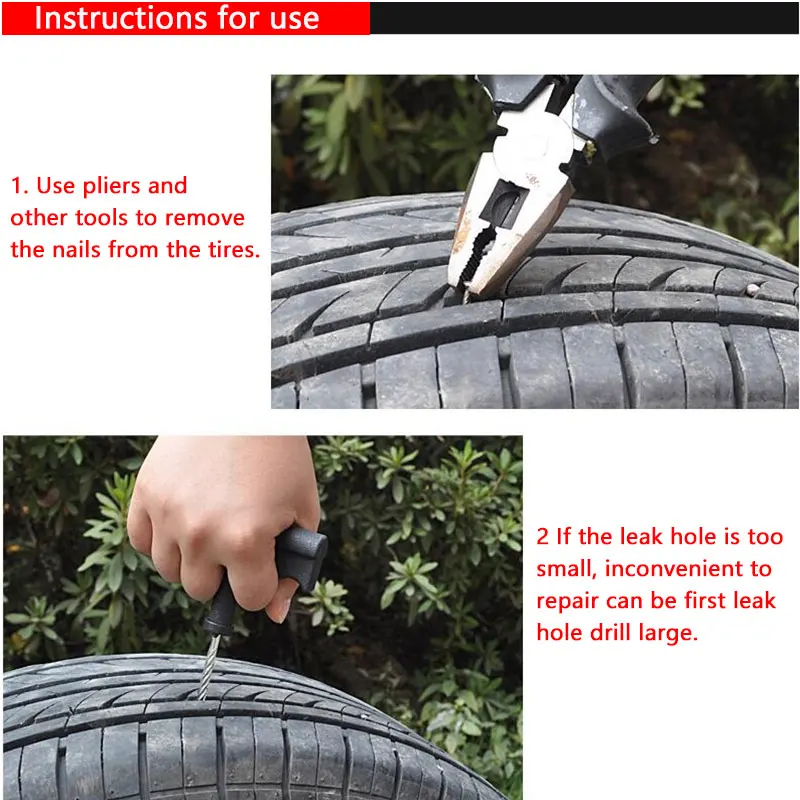 When replacing a part, make sure you get one that is compatible with your vehicle's specifications - not all replacement parts are the same! 3. Fix small leaks first before they get big. If you see traces of air bubbles coming out from under the car or visible damage to the rubber near the valve stem, take immediate action to repair the leak 4.Consider installing puncture-resistant tires if you often drive in areas with sharp objects such as nails or broken glass stuck into the pavement。5.B In extreme cases where repair efforts have failed and there is significant damage to the tread or sidewall due to leakage, it may be necessary to replace the entire tire assembly。6. Drive carefully in wet conditions until repairs are made; water can increase air resistance, which will only make things worse for your tires。7. Be prepared for potential loss of traction and reduced fuel consumption; fixing a leaking tire will help minimize these effects。8.
When replacing a part, make sure you get one that is compatible with your vehicle's specifications - not all replacement parts are the same! 3. Fix small leaks first before they get big. If you see traces of air bubbles coming out from under the car or visible damage to the rubber near the valve stem, take immediate action to repair the leak 4.Consider installing puncture-resistant tires if you often drive in areas with sharp objects such as nails or broken glass stuck into the pavement。5.B In extreme cases where repair efforts have failed and there is significant damage to the tread or sidewall due to leakage, it may be necessary to replace the entire tire assembly。6. Drive carefully in wet conditions until repairs are made; water can increase air resistance, which will only make things worse for your tires。7. Be prepared for potential loss of traction and reduced fuel consumption; fixing a leaking tire will help minimize these effects。8.
Leaking tires can cause a number of problems, including: Slippery roads. Driving on wet or icy roads with a leaking tire is incredibly dangerous. .Loss of control can lead to an accident.
Driving on wet or icy roads with a leaking tire is incredibly dangerous. .Loss of control can lead to an accident.
Inflated tires. Driving with an inflated tire is also dangerous as it increases the chance of loss of control and an accident. Excessive tire pressure can make tires too stiff and unstable, which can lead to accidents when you try to change lanes or stop suddenly.
Punctured tyres. If your tire bursts, it will leave huge holes through which water and debris can enter the car, not to mention a serious safety risk if you drive on wet roads.
Damaged Vehicles A leaking tire can damage both the inside and outside of your vehicle, making it harder for you to repair any damage and may lead to other mechanical problems down the road.
If you ignore a leaking tire, the pressure inside the tire will increase until it ruptures. Serious injury can result if you are driving on the road. Also, your vehicle may not move if there is a lot of liquid on the ground. If you see fluid leaking from a tire, do not drive until the problem is corrected! Here are some tips for fixing a leaking tire:
If you see fluid leaking from a tire, do not drive until the problem is corrected! Here are some tips for fixing a leaking tire:
There is no one-size-fits-all answer to this question, as the best way to fix a leaking tire depends on the situation. However, many tires can be fixed if they leak, and some may even need to be replaced. Here are some tips on how to fix a leak in tire:
Here are some tips on how to fix a leak in tire:
If you notice a small amount of fluid leaking from your tire every time you drive, you may just need a new valve stem. To do this, remove the wheel and valve stem assembly from the tire by unscrewing them both. Use a piece of wire or a screwdriver to pry on the old valve stem until it comes free. Then install the new one by screwing it into place with a wrench. Make sure the threads on both sides of the stem match before tightening the screws. If you have a major leak, a complete tire replacement may be required.
If you notice that a large amount of fluid is leaking from your tire at the same time, your tire is most likely defective and needs to be replaced. defective and needs to be replaced.
If you only experience minor leaks from your tires from time to time, such as while driving in rain or snow, there is usually no need to take immediate action. you're driving) and see if that solves any leak problems later on. If not, adding more air pressure can help fix any small leaks inside the tires themselves, but don't overdo it! Excessive tire pressure can lead to their rupture or irreversible loss of pressure.
If not, adding more air pressure can help fix any small leaks inside the tires themselves, but don't overdo it! Excessive tire pressure can lead to their rupture or irreversible loss of pressure.
Finally, always remember that if your vehicle has been left idle for long periods of time, such as during the winter months, its wheels and tires may freeze to the ground below; in this case, deflating all four of your vehicle's tires will free them up so they can be rotated properly and re-inflated (if necessary).
There is no definitive answer to this question, as the time it takes to fix a leaking tire will vary depending on the severity of the leak and the skill level of the technician performing the repair. However, as a general rule, fixing a leaking tire usually takes 30 to 60 minutes. However, in some cases it may take longer due to more complex repairs or multiple leaks.
No, fixing a leaky tire is easy. In fact, most people can do it themselves with a few simple tools and instructions. could be a sign of a leaky tire. If you notice that your tires are losing air quickly, it's time to take them in for repair.
In fact, most people can do it themselves with a few simple tools and instructions. could be a sign of a leaky tire. If you notice that your tires are losing air quickly, it's time to take them in for repair.
Repairing a leaking tire can be costly. The cost to repair a leaking tire will depend on the size and type of tire, as well as the location and severity of the leak. It is generally cheaper to replace a leaking tire than to fix it.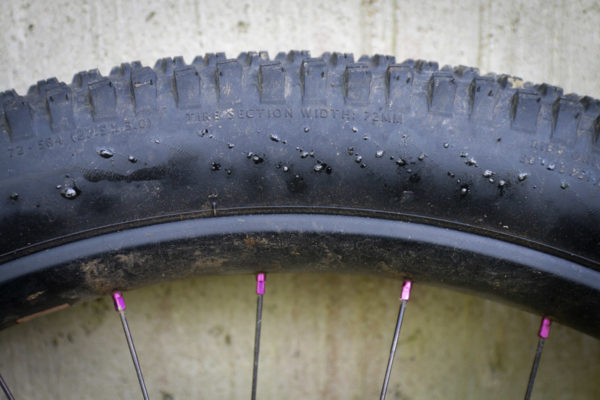
Here are some tips for fixing a leaking tire:
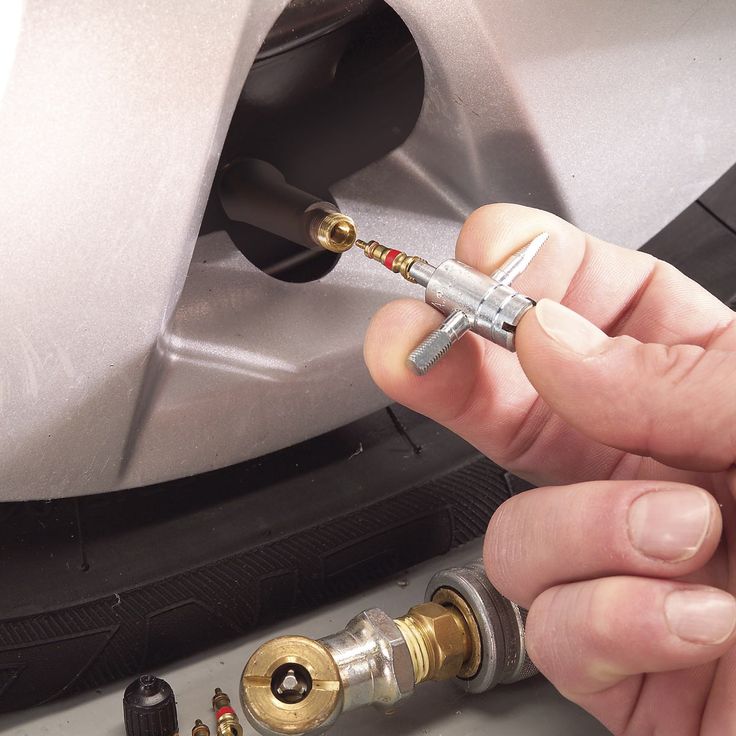 Clean up any debris inside and outside of the vehicle that could lead to corrosion , including areas of the undercarriage such as trunk lids where water can collect. machine carefully until the repair is completed - sudden stops can cause lead to additional brake wear, i.e. suspension and steering components. Check the tire pressure warning light frequently. Always use protective gear when handling liquids such as gasoline - Seek professional assistance if necessary - A qualified mechanic can check and repair your vehicle's engine oil level sensor, which may result in reduced fuel consumption increase hydrostatic pressure, which may lead to more large leaks - Park in a place where water cannot enter your vehicle - Keep children away from the vehicle during repairs - Follow proper fluid handling procedures during maintenance - Make sure all equipment is securely closed before starting work - Protect surrounding surfaces from collateral damage 19…..
Clean up any debris inside and outside of the vehicle that could lead to corrosion , including areas of the undercarriage such as trunk lids where water can collect. machine carefully until the repair is completed - sudden stops can cause lead to additional brake wear, i.e. suspension and steering components. Check the tire pressure warning light frequently. Always use protective gear when handling liquids such as gasoline - Seek professional assistance if necessary - A qualified mechanic can check and repair your vehicle's engine oil level sensor, which may result in reduced fuel consumption increase hydrostatic pressure, which may lead to more large leaks - Park in a place where water cannot enter your vehicle - Keep children away from the vehicle during repairs - Follow proper fluid handling procedures during maintenance - Make sure all equipment is securely closed before starting work - Protect surrounding surfaces from collateral damage 19….. If you think your tire is leaking, the first thing to do is check the pressure. If it is lower than recommended, you may need to replace the tire. You can also try pumping up the tire and check for air leaks. If there are no air leaks you may need to replace the tube or plug the hole in the tire. Finally, if all else fails, you can order a professional repair or replacement.
If it is lower than recommended, you may need to replace the tire. You can also try pumping up the tire and check for air leaks. If there are no air leaks you may need to replace the tube or plug the hole in the tire. Finally, if all else fails, you can order a professional repair or replacement.
If you have a flat tire, the first thing you should do is remove the wheel and tire. If the tire is completely flat, you can inflate it with a hand or bicycle pump. pounds per square inch. Replace the wheel and tire as soon as possible.
If your tire is leaking air, there are a few things you can do to fix the problem:
- Check for loose screws or bolts that could be causing the leak. Tighten any loose screws or bolts if necessary.
- Replace the valve stem if it is defective. This can be done by removing the wheel and unscrewing the valve stem cap. Remove any debris that may have accumulated inside the stem cap since it was last replaced. Replace the valve stem cap and tighten if necessary. wrench.
Replace the valve stem cap and tighten if necessary. wrench.
- Remove any debris or dirt that may have accumulated between the treads of your tires over time (including under your vehicle). Use a bucket filled with water and a little soap to wash everything well; don't forget to hit all those bottlenecks!
Inflate the tires to the recommended pressure according to the manufacturer's recommendations before reattaching them to the vehicle.
If your tire is leaking, don't panic. There are a few things you can do to fix the problem. First, check the air pressure. tighten all the bolts on the wheel arch cover and check for leaks again. Finally, if none of these solutions work, you may need to replace the tire. Here are some tips on how to change a tire:
.

There are several ways to fix a leaking bicycle tire.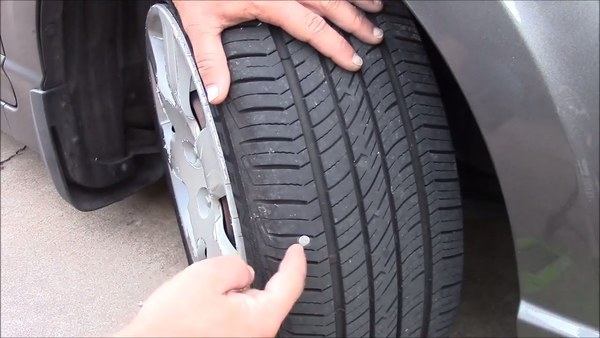 The most common way is to use a patch kit. The patch kit includes all the necessary tools and supplies to repair a punctured or broken tire. You can also try using sealant or glue to fix the leak. If there is a leak small, you can use a needle and syringe to fill the hole with air and seal it with glue. If the leak is larger, you need to replace the tire.
The most common way is to use a patch kit. The patch kit includes all the necessary tools and supplies to repair a punctured or broken tire. You can also try using sealant or glue to fix the leak. If there is a leak small, you can use a needle and syringe to fill the hole with air and seal it with glue. If the leak is larger, you need to replace the tire.
There are several different ways to fix a slow leak in a bicycle tire. One way is to use a patch kit. The patch kit includes various patches and glue so you can fix the leak quickly and easily. Another way is to use a tube. small, you can use a tube to close the hole and prevent the tire from leaking. If the leak is larger, you need to replace the tire.
There are several things you can do to fix a leaking bicycle tire. The most common solution is to inflate the tire with air and keep it pumping until the leak stops. You can also try using sealant or repair material to fix the hole in the tire. If these solutions do not work, you may need to replace the tire.
You can also try using sealant or repair material to fix the hole in the tire. If these solutions do not work, you may need to replace the tire.
There are several reasons why your bicycle tire may be leaking air. The most common cause is a loose tube from the rim or valve failure. If you cannot fix the leak yourself, you may need to take your bike to a mechanic for repair.
To fix a leaking bicycle tire, first make sure it is not due to a bad tube or valve failure. tube wall. In this case, you need to replace the entire tire.
Here are some tips for fixing a leaking bicycle tire:
- Check if the tube has moved by gently shaking it between your fingers. If it moves freely, then it is correctly installed on the rim.
- If there is no problem fitting the tube, try tightening any loose bolts on both sides of the wheel with a wrench (a 32mm wrench will do). Be careful not to overtighten as this could cause damage and further leaks.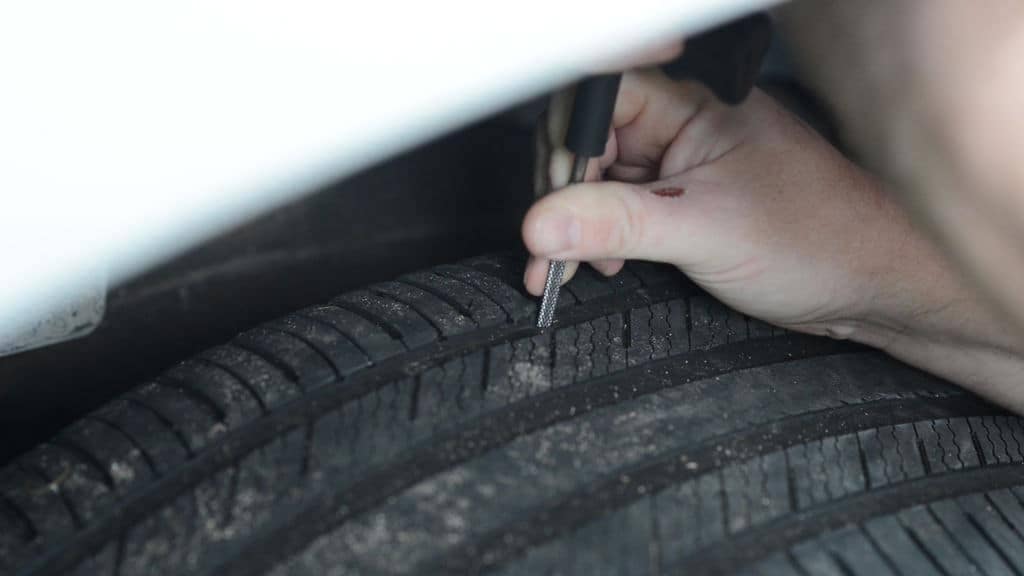
- If that doesn't work, check for tears or holes in the shroud around where the valve stem attaches to the tire sidewall (usually where you can see dirt or debris stuck inside). A puncture also often results in a leak in this area.
If your bike tire is leaking air, it needs to be repaired. There are several ways to tell if your tire needs repair:
- Your bike won't hold up to air pressure
- The tire feels too soft or springy when you touch it
-You can see bubbles coming out of the tire
- The tread of the tire is badly worn.
There are several things you can do to fix a leaking bicycle tire. The most common cause of a flat tire is a hole in the tube itself. tube, remove the wheel from the bike and unscrew the stem cap. Remove the old tube and screw in the new one. Replace the stem cap and wheel and you are ready to ride again! Another common problem with bikes is air bubbles inside the tires. When this happens, the pressure builds up to until it gets too big and the tire bursts. To solve this problem, inflate the tires until they fill with air, then let them go again. This should burst any air bubbles that were causing the problem.
When this happens, the pressure builds up to until it gets too big and the tire bursts. To solve this problem, inflate the tires until they fill with air, then let them go again. This should burst any air bubbles that were causing the problem.
There are several things you can do to try and fix a leaking bicycle tire. One option is to use duct tape to seal the puncture in the tire. This will help prevent air leakage, but it may not last long. Another option is to replace the tire. If the leak is small, you can fix it by re-inflating the tire and using a bandage or band-aid to hold it in place. If the leak is larger, then the tire needs to be replaced.
There are several ways to fix a leaking bicycle tire. One option is to use patches or plugs. The patches are easy to apply and can be removed if the tire needs to be replaced.